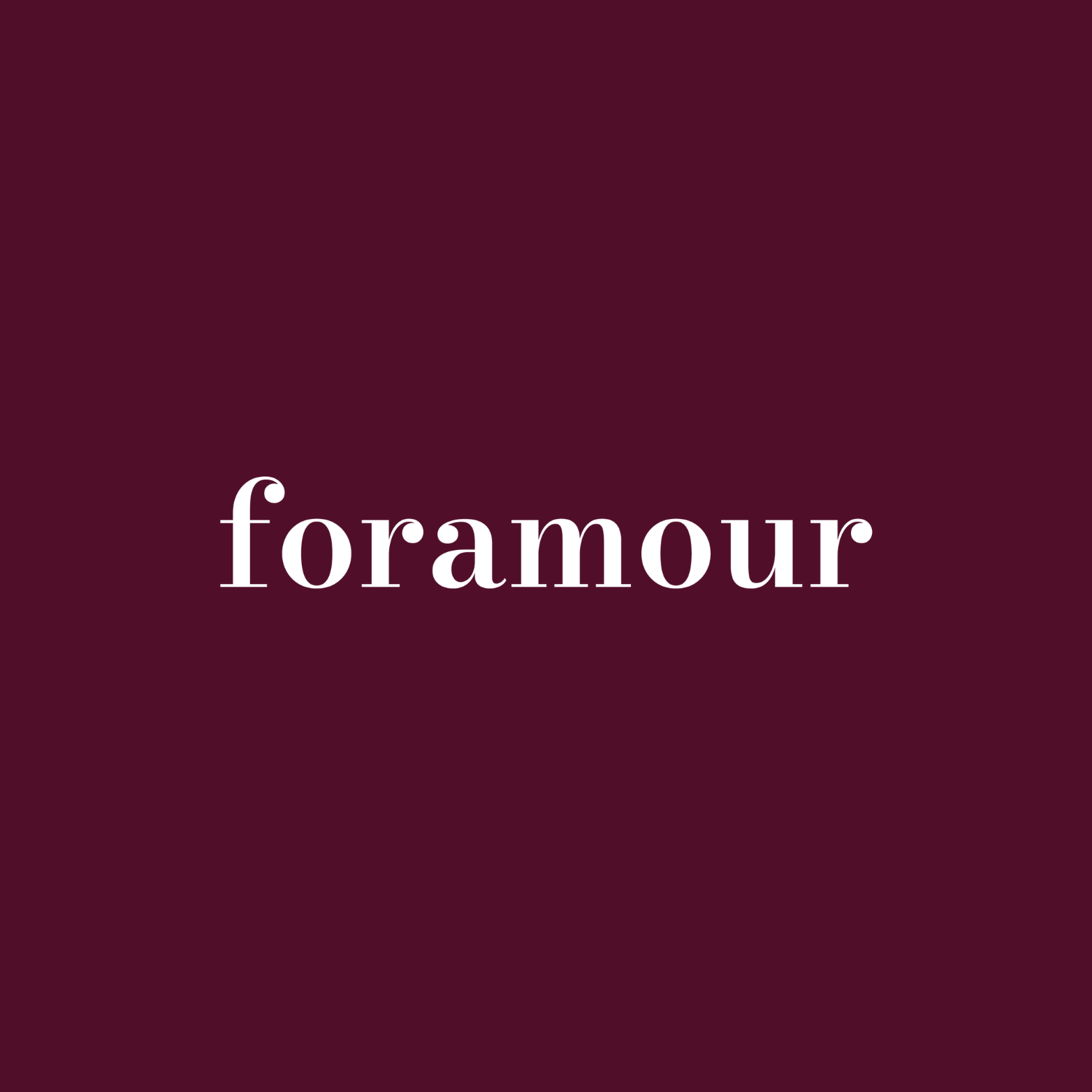
Storytelling Through Charms in Personal Narratives
In the vibrant jewelry bazaars of Bengaluru, a young professional gently lifts a silver lotus charm, her touch lingering on its detailed petals. This isn't merely an accessory it's a emblem of her career advancement, a tangible reminder she intends to wear daily. Throughout India, such charms and pendants are evolving beyond simple decorations into narrators of personal tales, intertwining individual experiences with artistic expression. In a nation where jewelry holds profound cultural significance, this move towards customization is revolutionizing the industry, fusing age-old customs with contemporary yearnings for distinctiveness and eco-friendliness.
Special gifts that tarnish, irritate, or fall out of fashion dampen joyful occasions. That disappointment clouds memories meant to endure. Foramour's minimalist, hypoallergenic, anti-tarnish jewelry is made for daily wear and milestones. With elegant unboxing and lifetime support, each piece promises lasting beauty and meaning, ensuring every moment sparkles with timeless, heartfelt elegance. Shop Now!
Storytelling Through Charms: Personal Narratives Drive Jewelry Trends in India
The jewelry sector in India, estimated at approximately ₹7.1 lakh crore in 2023 per industry analyses, has always been adaptable. Traditionally, gold and precious stones represented prosperity and prestige, particularly at matrimonial ceremonies and celebrations. However, contemporary urban millennials and Generation Z are reshaping the essence of jewelry. They're embracing charms compact, emblematic items that encapsulate life achievements, convictions, or ambitions. Ranging from pendants inspired by astrological signs to subtle etchings of sacred symbols like the Om, these artifacts prioritize significance over extravagance. Consumer insights from Deloitte India underscore this escalating appetite for tailoring, revealing that younger demographics yearn for adornments that mirror their singular personas.
The figures paint a vivid picture. The global jewelry market, encompassing India's substantial contribution, stood at USD 366.79 billion in 2024, anticipated to expand to USD 578.45 billion by 2033 at a 5.3% compound annual growth rate from 2025 onward. This surge stems from elevated disposable earnings, shifting style inclinations, and amplified call for opulent and custom-made adornments. The Asia Pacific region dominated with 60.2% share in 2024, while the U.S. commanded 92.6% of North America's revenue. Rings led products with 33.8%, and gold dominated materials at 54.9%. In India, this evolution is starkly evident. The emergence of budget-friendly opulence such as silver charms or synthetic diamond pendants has democratized customization for wider demographics, notably in major urban centers like Mumbai, Delhi, and Bengaluru. Established names like Titan and Tanishq are leveraging this with lines like “Charmx” and bespoke pendants, witnessing robust sales growth.
A Fusion of Tradition and Modernity
India's charm phenomenon is firmly anchored in societal rituals. Occasions such as Raksha Bandhan, Diwali, and Karva Chauth have historically involved jewelry exchanges, yet modern patrons are opting for charms laden with intimate meaning. A pendant featuring a peacock feather might evoke familial legacy, whereas a simple lotus charm could signify a soulful quest. As per the Federation of Indian Chambers of Commerce and Industry (FICCI), buyers are merging classic patterns with contemporary, streamlined aesthetics, yielding creations that resonate eternally yet freshly. This amalgamation shines through in endeavors by local ventures like Angana and Melorra, fashioning charm assortments that honor empowerment, eco-responsibility, and national heritage.
Consider Loveness Lee, a designer hailing from London whose methodology strikes a chord with India's city-dwelling youngsters. As detailed in Vogue Business, Lee's venture arose from discontent with prevailing jewelry offerings. “The masses could access mainstream items, conventional exquisite pieces, or antique aesthetics,” notes the Londoner. “But lacking were audacious, imaginative, and identifiable options at approachable costs.” Leveraging her abstract art roots, Lee commenced forging elaborate configurations from natural remnants like cactus frameworks and shell encrustations, morphing them into sculptural, adornable masterpieces. This inherent asymmetry marks the label's hallmark offerings that exude profound individuality and perpetual uniqueness owing to casting variances. “It's exclusively yours.” Though not tailored for India, the philosophy of distinctive, narrative-infused jewelry dovetails with Gen Z's leanings toward daring, inventive selections within budget.
Charms further harness a worldwide revival. Per Vogue, charm queries have escalated 150 percent in the preceding half-year per Lyst, spotlighting bracelets from MM6 Maison Margiela (300 percent weekly surge) and Dior (750 percent monthly spike) as top picks on the platform. Ssense abounds with whimsical variants from Justine Clenquet, Chopova Lowena, and Marc Jacobs, perfect for retro digital snaps akin to Brat aesthetics, as social feeds indicate widespread DIY enthusiasm. Italian variants square adaptable charms interlinked versus chained have surged in favor. Transcending adolescent allure, charm bracelets boast a prestigious lineage in haute couture. They graced Chanel catwalks in the '90s, complemented by whimsical belts and tiered chains, whereas Versace's opulent ethos has enduringly spotlighted lavish jewelry (hunt retro Medusa and coin embellishments). Versace's 1992 spring/summer epitomizes abundance.
Challenges in a Shifting Market
Amid the fervor, the charm upswing encounters obstacles. Gold, integral to Indian adornments, experienced a price escalation of about 21 percent in 2024 according to market trackers, rendering upscale metals less attainable for certain segments. This nudges preference toward silver and cultivated diamonds, yet underscores affordability concerns. With charm's rising vogue, over-commercialization looms. Factory-churned “bespoke” items may seem clichéd, eroding the genuineness attracting buyers to narrative-driven pieces. A designer in Mumbai shared that clients occasionally waver on charm acquisitions, apprehensive of diminishing exclusivity amid market saturation.
Cultural nuance poses another hurdle. In multifaceted India, charms linked to faith-based or ethereal icons like Om or Ganesha demand delicate management to prevent distortion. The fake goods arena exacerbates matters. Inexpensive foreign duplicates inundate online marketplaces, eroding genuine, green-sourced wares. A Human Rights Watch 2020 analysis on jewelry chains, viewable at HRW, highlights moral quandaries, observing that unauthorized extraction amplified in locales amid Covid-19, as enforcers curtailed oversight. Industrial sites emerged as virus hubs, including South Africa's profoundest gold dig. Amid pandemic separations, festive gifting gains poignancy. Enterprises formerly advancing ethical procurement redirected efforts to pressing emergency protocols. Indian shoppers, progressively attuned to these matters, seek openness. Sellers face pressure to affirm conscientious origins, as the study urges: “Query the vendor on responsible procurement.”
Opportunities for Growth
Nevertheless, prospects abound. India's ambitious mid-tier populace in secondary and tertiary locales such as Jaipur, Surat, and Lucknow craves attainable extravagance. Digital retailers like Amazon India and Myntra's elite accessory divisions extend charm's reach past urban cores. Projections from CareEdge Ratings indicate interest in morally obtained silver, repurposed gold, and engineered diamonds will advance at 10-15 percent compound annual rate in forthcoming years, heralding a pivot to enduring legacies. For labels like Foramour, this presents a spotlight moment. By amalgamating classic Indian emblems with green methodologies, they can seize a sector prizing legacy alongside accountability.
Influencer partnerships yield results. Narrative drives on Instagram, where city Indians linger browsing, portray charms surpassing mere ornaments as identity emblems. Envision a Diwali initiative spotlighting a charm inscribed with a clan's origin hamlet, evoking profound sentiment through nostalgia-modern blend. Industry outlooks suggest the jewelry arena might burgeon to nearly ₹14 lakh crore by 2030, propelled by youthful urbanites and eco-aware patrons, as per diverse analyses including those from TechSci Research.
Charms: Stories Worn with Pride
In India, jewelry has perpetually articulated sentiments of affection, rank, and heritage. Yet as charms ascend, they articulate afresh: intimate chronicles. From a lotus pendant commemorating vocational triumph to a silver Om donned in contemplation, these artifacts interlace tales into routine existence. For entities like Foramour, the trajectory is evident adopt India's opulent iconography, emphasize green procurement, and craft resonant narratives. Amid sector progression, one certainty endures: within India's youthful grasp, charms transcend adornment they're segments of an profoundly private epic, borne with honor and intent.
Frequently Asked Questions
Why are charm jewelry and personalized pendants becoming so popular in India?
Charm jewelry is gaining popularity in India because younger generations, particularly millennials and Gen Z, are seeking meaningful accessories that tell their personal stories rather than just displaying wealth. These consumers prefer charms that represent life achievements, beliefs, or aspirations like lotus pendants for career success or Om symbols for spiritual journeys. The trend reflects a shift from traditional gold jewelry focused on prestige to affordable, customizable pieces that express individual identity while still honoring cultural heritage.
How much is India's jewelry market worth and what's driving the growth of personalized charms?
India's jewelry sector was valued at approximately ₹7.1 lakh crore in 2023, with projections suggesting growth to nearly ₹14 lakh crore by 2030. The charm and personalized jewelry segment is experiencing particularly strong growth due to rising disposable incomes, changing fashion preferences, and increased demand for affordable luxury options like silver charms and lab-grown diamond pendants. Major brands like Titan and Tanishq are capitalizing on this trend with specialized charm collections, witnessing robust sales growth in urban centers.
What challenges does the charm jewelry market face in India, and how are brands addressing sustainability concerns?
The charm jewelry market in India faces several challenges including rising gold prices (up 21% in 2024), over-commercialization risks, and the proliferation of cheap counterfeit products online. Additionally, there are growing concerns about ethical sourcing and sustainability in jewelry supply chains. Brands are addressing these issues by offering alternative materials like ethically-sourced silver and lab-grown diamonds, which are projected to grow at 10-15% CAGR. Companies are also emphasizing transparency in their procurement practices to meet the demands of increasingly conscious consumers.
Disclaimer: The above helpful resources content contains personal opinions and experiences. The information provided is for general knowledge and does not constitute professional advice.
You may also be interested in: Community-Centric Craft Stories Strengthen Jewellery Brands
Special gifts that tarnish, irritate, or fall out of fashion dampen joyful occasions. That disappointment clouds memories meant to endure. Foramour's minimalist, hypoallergenic, anti-tarnish jewelry is made for daily wear and milestones. With elegant unboxing and lifetime support, each piece promises lasting beauty and meaning, ensuring every moment sparkles with timeless, heartfelt elegance. Shop Now!
Powered by flareAI.co
Share


